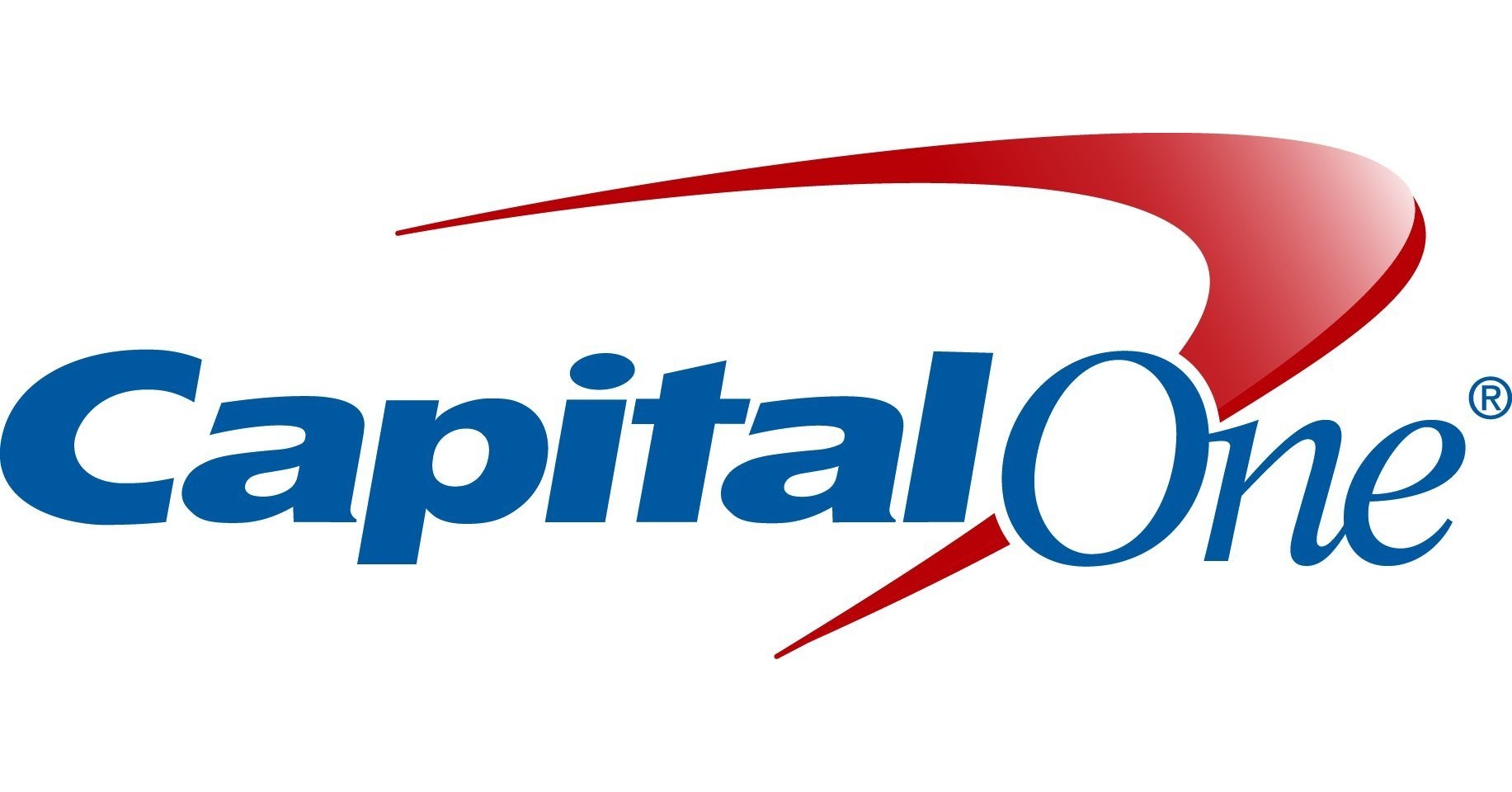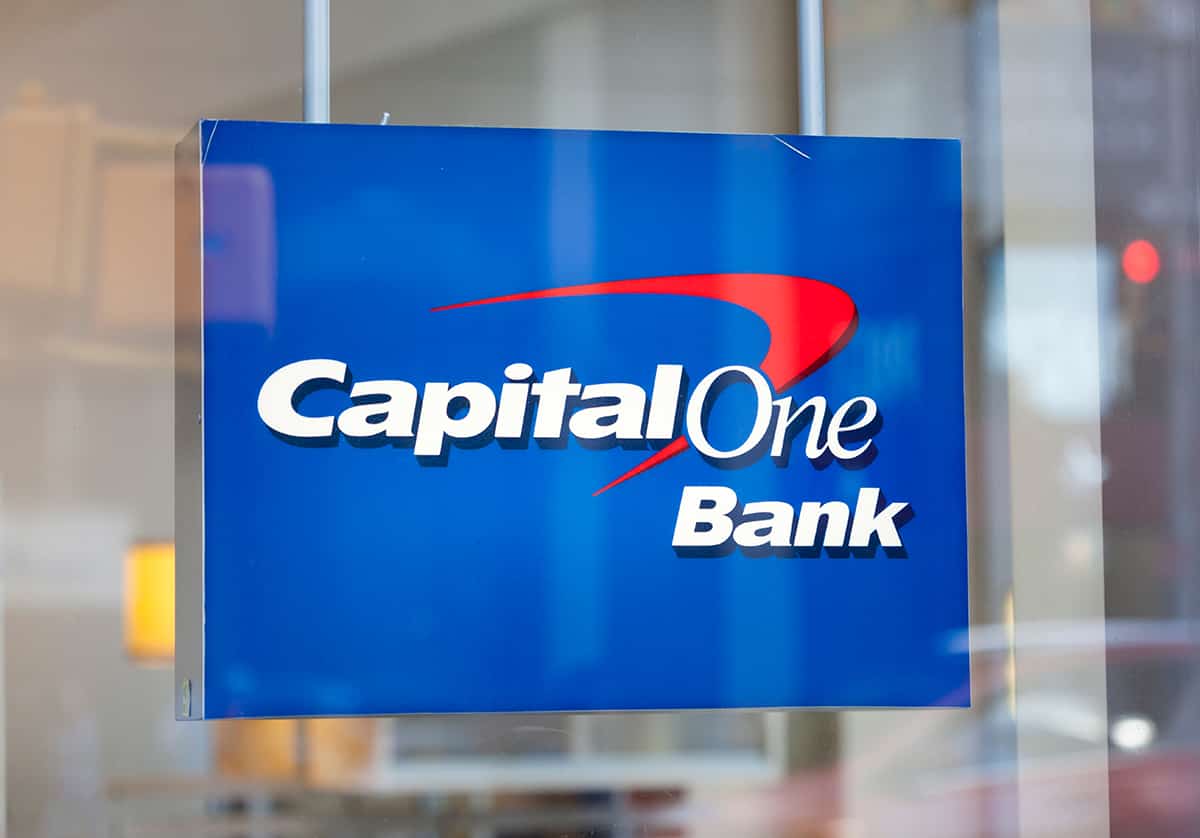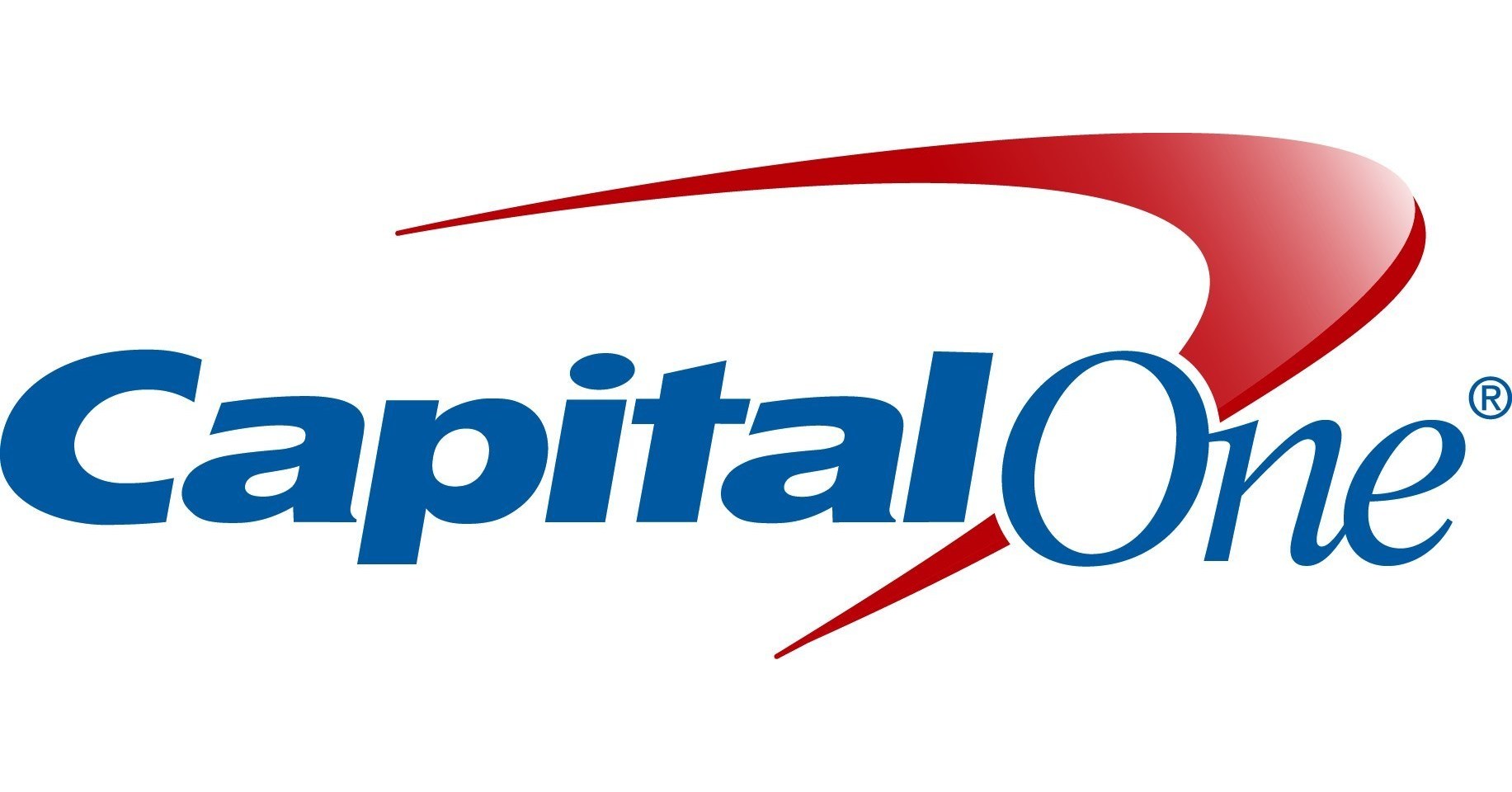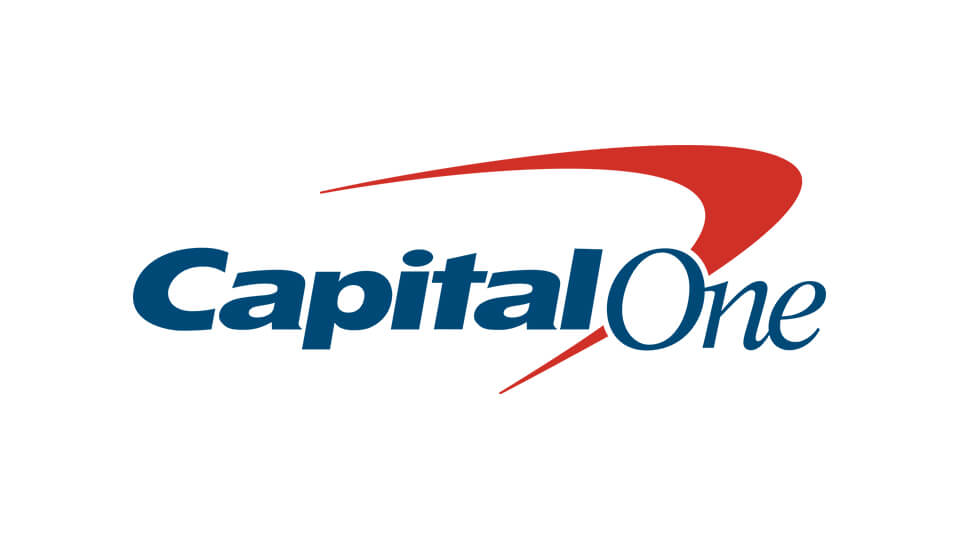Capital One Financial Corporation's Upcoming Earnings Report: A Financial Analysis

- Earnings per Share (EPS) is predicted to be $2.78, indicating potential profitability.
- The Price-to-Earnings (P/E) ratio stands at 16.75, reflecting moderate investor confidence.
- Financial ratios such as the debt-to-equity ratio (0.78) and current ratio (1.88) highlight COF's financial stability.
Capital One Financial Corporation, known by its ticker NYSE:COF, is a prominent player in the financial services sector. The company is recognized for its credit card, banking, and auto loan services. As COF prepares to release its quarterly earnings on January 21, 2025, analysts are keenly observing its financial performance. Competitors in the industry include major banks like JPMorgan Chase and Bank of America.
Wall Street analysts predict that COF will report earnings per share (EPS) of $2.78, with revenue expected to reach approximately $10.22 billion. These figures are crucial as they provide a snapshot of the company's profitability and sales performance. However, as highlighted by analysts, there is a focus on deeper financial metrics to assess COF's overall health and efficiency.
Despite the anticipated growth in earnings, COF may not have the ideal combination of factors for an earnings beat. The company's price-to-earnings (P/E) ratio is 16.75, which is a measure of its current share price relative to its per-share earnings. A P/E ratio of this level suggests that investors are willing to pay $16.75 for every $1 of earnings, which is relatively moderate in the financial sector.
COF's price-to-sales ratio is 1.47, indicating that investors are paying $1.47 for every $1 of the company's sales. This ratio, along with an enterprise value to sales ratio of 1.46, provides insight into how the market values COF's revenue. Additionally, the enterprise value to operating cash flow ratio of 3.17 suggests that the company generates a healthy amount of cash flow relative to its enterprise value.
The company's financial stability is further supported by a debt-to-equity ratio of 0.78, showing a moderate level of debt compared to equity. A current ratio of 1.88 indicates that COF has a strong ability to cover its short-term liabilities with its short-term assets. These metrics are essential for investors and analysts as they prepare for COF's upcoming earnings report, providing a comprehensive view of the company's financial standing.
| Symbol | Price | %chg |
|---|---|---|
| V.BA | 24950 | 0 |
| MA.BA | 23125 | -0.65 |
| AXP.BA | 26500 | 0.19 |
| BFIN.JK | 860 | 0 |

Capital One Smashes Q2 Profit Expectations, Stock Gains 4%
Capital One Financial (NYSE:COF) shares rose more than 4% after-hours on Tuesday after the company reported second-quarter adjusted earnings that handily beat Wall Street estimates, even as it recorded a headline net loss tied to its recent acquisition of Discover Financial.
Adjusted earnings per share came in at $5.48, far exceeding the $4.03 expected by analysts. On a GAAP basis, however, the company reported a net loss of $4.3 billion, or $8.58 per share, primarily due to an $8.77 billion allowance build for Discover’s non-PCD loans following the completion of the $35.3 billion all-stock merger in May.
Revenue rose 25% sequentially to $12.5 billion, just shy of the $12.72 billion consensus estimate. The Discover acquisition significantly boosted Capital One’s scale, making it the largest U.S. credit card issuer by balances.
Period-end loans surged 36% to $439.3 billion, with credit card balances up 72% to $269.7 billion. Deposits rose 27% to $468.1 billion, further strengthening the bank’s liquidity position.
The results highlight strong core profitability and growing scale, despite near-term accounting impacts from the Discover integration.

Capital One Financial Corporation's Q4 Earnings Analysis
- Capital One Financial Corporation (NYSE:COF) reported a net income of $1.1 billion, or $2.67 per diluted common share in Q4 2024.
- The company saw a 2% increase in total net revenue to $10.2 billion, with a notable improvement in its net interest margin to 6.88%.
- Capital One's provision for credit losses rose to $2.6 billion, but it also released $245 million from its loan reserves.
Capital One Financial Corporation, listed as NYSE:COF, is a prominent player in the financial services sector, offering a range of products including credit cards, auto loans, and banking services. In the fourth quarter of 2024, Capital One reported a net income of $1.1 billion, or $2.67 per diluted common share. This represents a decline from the previous quarter's $1.8 billion, or $4.41 per share, but an improvement from the $706 million, or $1.67 per share, in the same quarter of 2023. The adjusted net income for the quarter was $3.09 per share, surpassing the estimated $2.78, as highlighted by RBC Capital.
Richard D. Fairbank, the company's CEO, emphasized the steady growth in Capital One's domestic card business and a resurgence in auto loan growth. The company also saw a 2% increase in total net revenue to $10.2 billion, although this was slightly below the estimated $10.21 billion. Non-interest expenses rose by 15% to $6.1 billion, driven by a 24% increase in marketing expenses and a 12% rise in operating expenses. Despite these challenges, Capital One's net interest margin improved by 25 basis points to 6.88% for the full year 2024.
The provision for credit losses increased by $160 million to $2.6 billion, with net charge-offs amounting to $2.9 billion. However, the company released $245 million from its loan reserves. On the balance sheet, the common equity Tier 1 capital ratio stood at 13.5% as of December 31, 2024. Period-end loans held for investment increased by $7.5 billion, or 2%, to $327.8 billion, with credit card loans rising by $5.9 billion, or 4%, to $162.5 billion. Total deposits grew by $9.1 billion, or 3%, to $362.7 billion.
RBC Capital maintained its "Sector Perform" rating for Capital One, recommending holding the stock. The stock price at the time was $197.47, and RBC Capital raised the price target from $190 to $200, as reported by TheFly. Capital One's operating income and EBITDA both amounted to $3.024 billion, with a pre-tax income of $2.218 billion and an income tax expense of $441 million. The company's gross profit matched its revenue, standing at $10.014 billion.

Capital One Financial Corporation's Q4 Earnings Analysis
- Capital One Financial Corporation (NYSE:COF) reported a net income of $1.1 billion, or $2.67 per diluted common share in Q4 2024.
- The company saw a 2% increase in total net revenue to $10.2 billion, with a notable improvement in its net interest margin to 6.88%.
- Capital One's provision for credit losses rose to $2.6 billion, but it also released $245 million from its loan reserves.
Capital One Financial Corporation, listed as NYSE:COF, is a prominent player in the financial services sector, offering a range of products including credit cards, auto loans, and banking services. In the fourth quarter of 2024, Capital One reported a net income of $1.1 billion, or $2.67 per diluted common share. This represents a decline from the previous quarter's $1.8 billion, or $4.41 per share, but an improvement from the $706 million, or $1.67 per share, in the same quarter of 2023. The adjusted net income for the quarter was $3.09 per share, surpassing the estimated $2.78, as highlighted by RBC Capital.
Richard D. Fairbank, the company's CEO, emphasized the steady growth in Capital One's domestic card business and a resurgence in auto loan growth. The company also saw a 2% increase in total net revenue to $10.2 billion, although this was slightly below the estimated $10.21 billion. Non-interest expenses rose by 15% to $6.1 billion, driven by a 24% increase in marketing expenses and a 12% rise in operating expenses. Despite these challenges, Capital One's net interest margin improved by 25 basis points to 6.88% for the full year 2024.
The provision for credit losses increased by $160 million to $2.6 billion, with net charge-offs amounting to $2.9 billion. However, the company released $245 million from its loan reserves. On the balance sheet, the common equity Tier 1 capital ratio stood at 13.5% as of December 31, 2024. Period-end loans held for investment increased by $7.5 billion, or 2%, to $327.8 billion, with credit card loans rising by $5.9 billion, or 4%, to $162.5 billion. Total deposits grew by $9.1 billion, or 3%, to $362.7 billion.
RBC Capital maintained its "Sector Perform" rating for Capital One, recommending holding the stock. The stock price at the time was $197.47, and RBC Capital raised the price target from $190 to $200, as reported by TheFly. Capital One's operating income and EBITDA both amounted to $3.024 billion, with a pre-tax income of $2.218 billion and an income tax expense of $441 million. The company's gross profit matched its revenue, standing at $10.014 billion.

Capital One Financial Corporation's Strong Earnings Report
- Capital One Financial Corporation reported an EPS of $3.09, surpassing the estimated $2.78 and the previous year's $2.24.
- Despite a slight miss in revenue expectations, the company saw a 60% increase in fourth-quarter profit, mainly due to a boost in interest income.
- Capital One's financial health is solid, with a P/E ratio of 16.97, a moderate debt-to-equity ratio of 0.78, and a strong current ratio of 1.88.
Capital One Financial Corporation, listed on the NYSE under the symbol COF, is a prominent player in the banking and credit card industry. The company offers a wide range of financial products and services, including credit cards, auto loans, and banking services. It competes with other major financial institutions like JPMorgan Chase and Bank of America.
On January 21, 2025, Capital One reported earnings per share (EPS) of $3.09, exceeding the estimated $2.78. This performance also surpassed the Zacks Consensus Estimate of $2.66 per share, as highlighted by Zacks. Compared to the previous year's same quarter EPS of $2.24, this marks a notable improvement in the company's financial performance.
Despite the impressive EPS, Capital One's revenue for the quarter was $10.19 billion, slightly below the estimated $10.21 billion. This mixed result reflects a decline in revenue, even as the company experienced a significant 60% increase in fourth-quarter profit, driven by a boost in interest income. This indicates strong financial performance despite revenue challenges.
Capital One's financial metrics reveal a price-to-earnings (P/E) ratio of approximately 16.97, suggesting that investors are willing to pay $16.97 for every dollar of earnings. The company's price-to-sales ratio is about 1.49, and its enterprise value to sales ratio is roughly 1.48, indicating a balanced valuation relative to its sales.
The company's debt-to-equity ratio stands at about 0.78, indicating a moderate level of debt compared to equity. With a current ratio of approximately 1.88, Capital One demonstrates a strong ability to cover its short-term liabilities with its short-term assets, reflecting a solid liquidity position.

Capital One Financial Corporation's Strong Earnings Report
- Capital One Financial Corporation reported an EPS of $3.09, surpassing the estimated $2.78 and the previous year's $2.24.
- Despite a slight miss in revenue expectations, the company saw a 60% increase in fourth-quarter profit, mainly due to a boost in interest income.
- Capital One's financial health is solid, with a P/E ratio of 16.97, a moderate debt-to-equity ratio of 0.78, and a strong current ratio of 1.88.
Capital One Financial Corporation, listed on the NYSE under the symbol COF, is a prominent player in the banking and credit card industry. The company offers a wide range of financial products and services, including credit cards, auto loans, and banking services. It competes with other major financial institutions like JPMorgan Chase and Bank of America.
On January 21, 2025, Capital One reported earnings per share (EPS) of $3.09, exceeding the estimated $2.78. This performance also surpassed the Zacks Consensus Estimate of $2.66 per share, as highlighted by Zacks. Compared to the previous year's same quarter EPS of $2.24, this marks a notable improvement in the company's financial performance.
Despite the impressive EPS, Capital One's revenue for the quarter was $10.19 billion, slightly below the estimated $10.21 billion. This mixed result reflects a decline in revenue, even as the company experienced a significant 60% increase in fourth-quarter profit, driven by a boost in interest income. This indicates strong financial performance despite revenue challenges.
Capital One's financial metrics reveal a price-to-earnings (P/E) ratio of approximately 16.97, suggesting that investors are willing to pay $16.97 for every dollar of earnings. The company's price-to-sales ratio is about 1.49, and its enterprise value to sales ratio is roughly 1.48, indicating a balanced valuation relative to its sales.
The company's debt-to-equity ratio stands at about 0.78, indicating a moderate level of debt compared to equity. With a current ratio of approximately 1.88, Capital One demonstrates a strong ability to cover its short-term liabilities with its short-term assets, reflecting a solid liquidity position.

Capital One Financial Corporation's Upcoming Earnings Report: A Financial Analysis
- Earnings per Share (EPS) is predicted to be $2.78, indicating potential profitability.
- The Price-to-Earnings (P/E) ratio stands at 16.75, reflecting moderate investor confidence.
- Financial ratios such as the debt-to-equity ratio (0.78) and current ratio (1.88) highlight COF's financial stability.
Capital One Financial Corporation, known by its ticker NYSE:COF, is a prominent player in the financial services sector. The company is recognized for its credit card, banking, and auto loan services. As COF prepares to release its quarterly earnings on January 21, 2025, analysts are keenly observing its financial performance. Competitors in the industry include major banks like JPMorgan Chase and Bank of America.
Wall Street analysts predict that COF will report earnings per share (EPS) of $2.78, with revenue expected to reach approximately $10.22 billion. These figures are crucial as they provide a snapshot of the company's profitability and sales performance. However, as highlighted by analysts, there is a focus on deeper financial metrics to assess COF's overall health and efficiency.
Despite the anticipated growth in earnings, COF may not have the ideal combination of factors for an earnings beat. The company's price-to-earnings (P/E) ratio is 16.75, which is a measure of its current share price relative to its per-share earnings. A P/E ratio of this level suggests that investors are willing to pay $16.75 for every $1 of earnings, which is relatively moderate in the financial sector.
COF's price-to-sales ratio is 1.47, indicating that investors are paying $1.47 for every $1 of the company's sales. This ratio, along with an enterprise value to sales ratio of 1.46, provides insight into how the market values COF's revenue. Additionally, the enterprise value to operating cash flow ratio of 3.17 suggests that the company generates a healthy amount of cash flow relative to its enterprise value.
The company's financial stability is further supported by a debt-to-equity ratio of 0.78, showing a moderate level of debt compared to equity. A current ratio of 1.88 indicates that COF has a strong ability to cover its short-term liabilities with its short-term assets. These metrics are essential for investors and analysts as they prepare for COF's upcoming earnings report, providing a comprehensive view of the company's financial standing.







